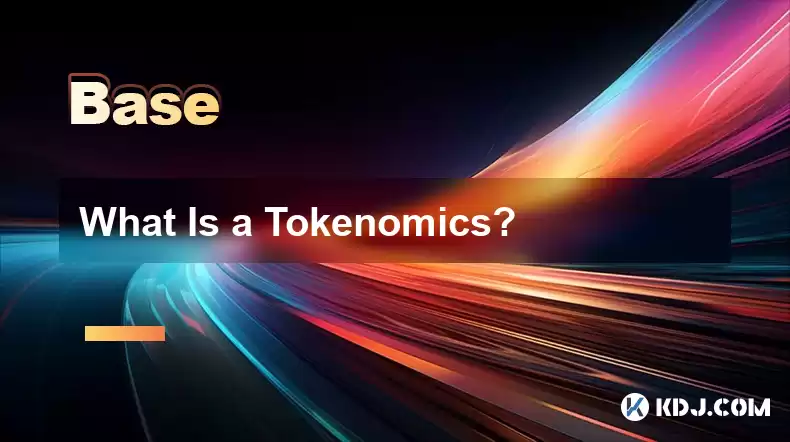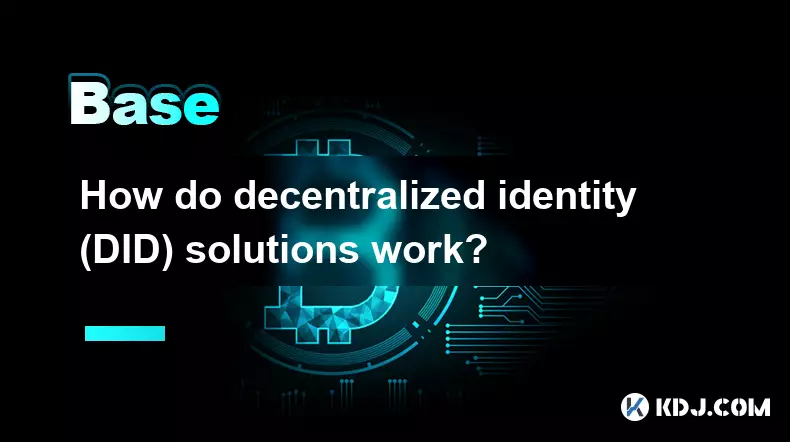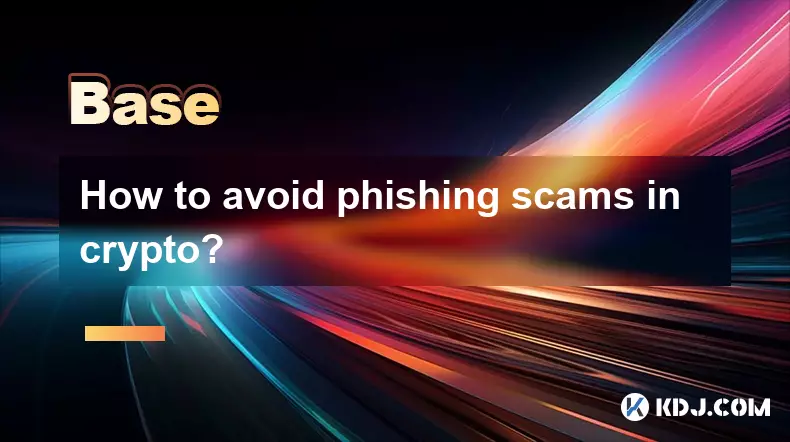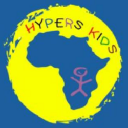-
 bitcoin
bitcoin $106975.071866 USD
-0.29% -
 ethereum
ethereum $3871.670850 USD
-0.07% -
 tether
tether $1.000261 USD
-0.01% -
 bnb
bnb $1084.417621 USD
-0.50% -
 xrp
xrp $2.348167 USD
0.82% -
 solana
solana $185.621736 USD
0.45% -
 usd-coin
usd-coin $0.999833 USD
-0.04% -
 tron
tron $0.313423 USD
0.81% -
 dogecoin
dogecoin $0.188856 USD
0.54% -
 cardano
cardano $0.630416 USD
-0.49% -
 hyperliquid
hyperliquid $36.506353 USD
2.24% -
 ethena-usde
ethena-usde $0.999584 USD
-0.01% -
 chainlink
chainlink $16.750026 USD
-0.77% -
 stellar
stellar $0.313373 USD
0.37% -
 bitcoin-cash
bitcoin-cash $465.978560 USD
-1.57%
What Is a Tokenomics?
Tokenomics provides a comprehensive framework for understanding the economic properties, distribution, and utility of tokens within a blockchain project, aiding in the assessment of their potential value and impact.
Dec 16, 2024 at 10:13 pm

What is Tokenomics?
Tokenomics is a comprehensive analysis of a cryptocurrency or blockchain project's token, considering its economic properties, distribution, and utility. It provides a framework for understanding the role of tokens within a project and assessing their potential value and impact.
Key Points:
- Token Allocation and Distribution: Examines how tokens are distributed among stakeholders, including developers, investors, and the community.
- Token Utility and Value: Defines the specific functions and uses of tokens within the project's ecosystem, determining their value proposition.
- Token Economics and Inflation: Analyzes the token's monetary properties, such as supply, inflation rate, and mechanisms for controlling supply.
- Staking, Governance, and Rewards: Explores the incentives and opportunities for token holders to participate in network governance and earn rewards.
- Tokenomics and Speculation: Discusses the role of speculation and market sentiment in shaping token prices and the tokenomics of the project.
- Risks and Challenges in Tokenomics: Identifies potential risks associated with tokenomics, including market volatility, security vulnerabilities, and regulatory issues.
- Innovation and Trends in Tokenomics: Explores emerging concepts and trends in tokenomics, such as utility-based tokens, decentralized finance (DeFi), and non-fungible tokens (NFTs).
Understanding Token Allocation and Distribution
Token allocation determines the initial distribution of tokens among different stakeholders. This allocation can have a significant impact on the project's long-term success and decentralization. Common allocation strategies include:
- Founders and Team: Tokens are allocated to the project's founders and development team to incentivize their contribution and commitment.
- Investors: Investors receive tokens in exchange for providing funding and support during the project's early stages.
- Community and Airdrops: Tokens are distributed to the community or the general public through airdrops and other promotional campaigns to foster adoption and awareness.
- Mining or Staking Rewards: Tokens can be rewarded to miners or stakers for securing the network and contributing to its growth.
Token Utility and Value
Beyond their primary function as a means of exchange, tokens can serve various purposes within a project's ecosystem, enhancing their value and utility. Some common token uses include:
- Governance: Token holders may have voting rights and the ability to participate in decision-making processes related to the project's development and governance.
- Access to Services: Tokens can grant access to exclusive features, services, and content within the project's platform or ecosystem.
- Staking and Rewards: Holding tokens enables users to stake them and earn rewards for participating in the network's validation and security.
- Utility Tokens: Tokens designed specifically for a specific use case, providing practical functionality within the project's ecosystem.
Token Economics and Inflation
Token economics focuses on the monetary properties of tokens, including their supply, inflation rate, and mechanisms for controlling supply. Key considerations include:
- Token Supply: The total number of tokens in circulation, affecting the scarcity and value of individual tokens.
- Inflation Rate: The rate at which new tokens are created or issued, influencing the long-term supply and value of the tokens.
- Supply Control Mechanisms: Protocols or mechanisms designed to stabilize the supply of tokens, such as token burns, buyback programs, or capped supply limits.
Staking, Governance, and Rewards
Staking rewards incentivize token holders to actively participate in the network's security and governance. Proof-of-Stake (PoS) systems commonly use staking mechanisms, where token holders deposit their tokens in staking pools to secure the blockchain and validate transactions. In return, they earn staking rewards or participate in governance voting.
- Staking Mechanisms: Describe how staking works within the project, the requirements for participating, and the potential rewards.
- Governance Models: Explain the role of token holders in governance, the voting process, and the influence they have on the project's development.
- Reward Distribution: Discuss the criteria for distributing rewards to token holders, including factors such as the amount staked, duration of staking, and network activity.
Disclaimer:info@kdj.com
The information provided is not trading advice. kdj.com does not assume any responsibility for any investments made based on the information provided in this article. Cryptocurrencies are highly volatile and it is highly recommended that you invest with caution after thorough research!
If you believe that the content used on this website infringes your copyright, please contact us immediately (info@kdj.com) and we will delete it promptly.
- Mantle Price, Cryptocurrency, Market Analysis: Is the Rally Sustainable?
- 2025-10-20 04:45:15
- Riding the Crypto Wave: AlphaPepe, Presales, and 2025's Top Projects
- 2025-10-20 04:25:15
- CoinDCX, Coinbase, and the Future of Crypto Investment: What's the Deal?
- 2025-10-20 04:25:15
- Bitcoin's 'Shocktober' Surprise: Consolidation Before a Moonvember?
- 2025-10-20 05:05:12
- Solana Shines: How SOL Exposure Can Boost Your Investment Portfolio
- 2025-10-20 04:45:15
- HUGS Token: The Meme Coin with 100x Potential?
- 2025-10-20 04:50:12
Related knowledge

How do decentralized identity (DID) solutions work?
Oct 14,2025 at 11:36pm
Understanding Decentralized Identity in the Blockchain Ecosystem1. Decentralized identity (DID) solutions are built on blockchain networks, allowing i...

What is the difference between Near Protocol and Ethereum?
Oct 15,2025 at 08:01am
Near Protocol and Ethereum: Core Architectural Differences1. Near Protocol operates on a sharded blockchain architecture known as Nightshade, which al...

What does it mean for code to be "open source" in crypto?
Oct 12,2025 at 01:54pm
Understanding Open Source in the Cryptocurrency Ecosystem1. In the context of cryptocurrency, open source refers to software whose code is publicly ac...

What is the purpose of a "testnet"?
Oct 12,2025 at 09:01am
Understanding the Role of Testnets in Blockchain Development1. A testnet serves as a parallel version of a blockchain network, designed specifically f...

How to avoid phishing scams in crypto?
Oct 13,2025 at 06:18pm
Understanding Common Crypto Phishing Tactics1. Cybercriminals frequently use fake websites that mirror legitimate crypto exchanges or wallet platforms...

What is the difference between single-collateral and multi-collateral Dai?
Oct 12,2025 at 05:18pm
Understanding Single-Collateral Dai1. Single-Collateral Dai (SCD) was the original version of the Dai stablecoin launched by MakerDAO in 2017. It allo...

How do decentralized identity (DID) solutions work?
Oct 14,2025 at 11:36pm
Understanding Decentralized Identity in the Blockchain Ecosystem1. Decentralized identity (DID) solutions are built on blockchain networks, allowing i...

What is the difference between Near Protocol and Ethereum?
Oct 15,2025 at 08:01am
Near Protocol and Ethereum: Core Architectural Differences1. Near Protocol operates on a sharded blockchain architecture known as Nightshade, which al...

What does it mean for code to be "open source" in crypto?
Oct 12,2025 at 01:54pm
Understanding Open Source in the Cryptocurrency Ecosystem1. In the context of cryptocurrency, open source refers to software whose code is publicly ac...

What is the purpose of a "testnet"?
Oct 12,2025 at 09:01am
Understanding the Role of Testnets in Blockchain Development1. A testnet serves as a parallel version of a blockchain network, designed specifically f...

How to avoid phishing scams in crypto?
Oct 13,2025 at 06:18pm
Understanding Common Crypto Phishing Tactics1. Cybercriminals frequently use fake websites that mirror legitimate crypto exchanges or wallet platforms...

What is the difference between single-collateral and multi-collateral Dai?
Oct 12,2025 at 05:18pm
Understanding Single-Collateral Dai1. Single-Collateral Dai (SCD) was the original version of the Dai stablecoin launched by MakerDAO in 2017. It allo...
See all articles










































































